Practicing Harp Happiness
#244: Next Level Technique: 3 Myths You Need to Bust
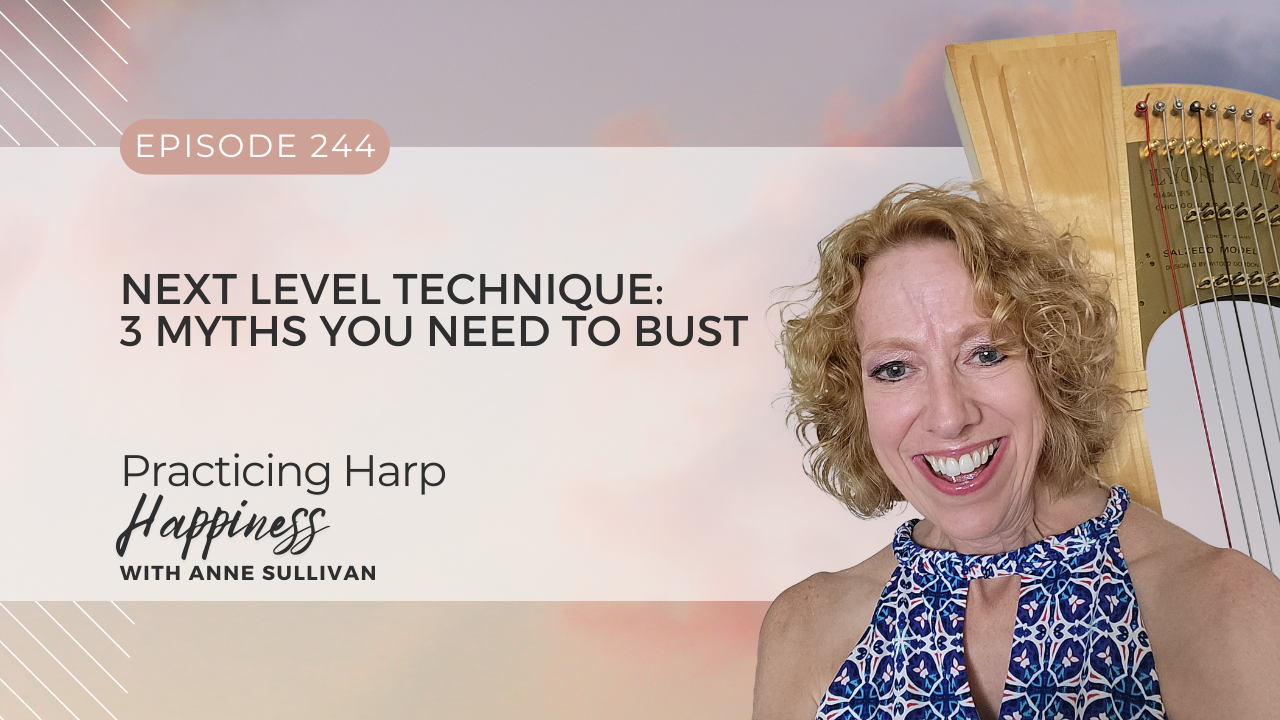
If you heard last week’s podcast, you may remember that this month’s podcast episodes are all about growth, your growth as a harpist and the systems and skills that are necessary for that growth.
Last week, we talked about three key systems that you need to have in place for growth. This week is all about technique. I know it may sound like a dry as dust topic to some of you. Harpists generally fall into two distinct camps: those who hate doing technique exercises and those who love them. So if you love your Grossi and LaRiviere or whatever exercise book you use, this podcast is going to be right up your alley. We’ll dive into how you can use what you’re doing now to get to that next level of technical proficiency.
If you’re in the other camp, one of those who feels like exercises are torture when all you want to do is play pretty pieces, I hear you. I’m talking to you as a convert. Granted it was many years ago when I finally realized that exercises weren’t just for solving prob...
#243: Architect Your Harp Playing Growth with 3 Key Systems
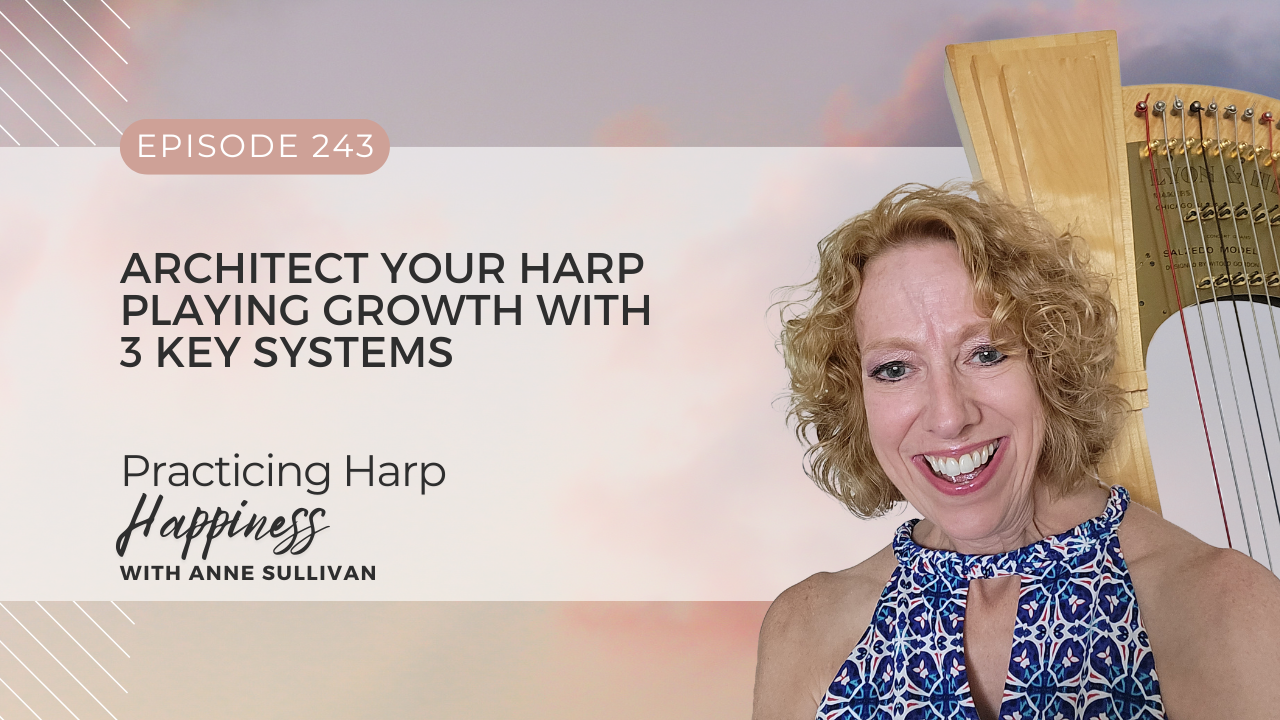
A system is comfort. When we have and follow a system, whether it’s for completing tasks, or crafting, or making a grocery list, our mind can be at ease. Why? Because we know we have the steps to complete our task, and all we have to do is to follow the steps and the task will be done.
When it comes to harp playing, people frequently make one of two mistakes. One is thinking that harp playing is inherently creative, and therefore a system is not only unnecessary, but it will rob your music of its soul. The other is trying to systematize everything about your playing in an attempt to get consistent results or make consistent progress.
If you heard last week’s podcast, you know that the word “progress” is one of the words I’m trying to steer clear of this year, but it is one I am going to find hard to avoid. What’s interesting, though, is that systematization is one of the “progress” traps. Progress, meaning in this case growth either overall growth or integration of a single piece...
#242: My New Vocabulary for 2026
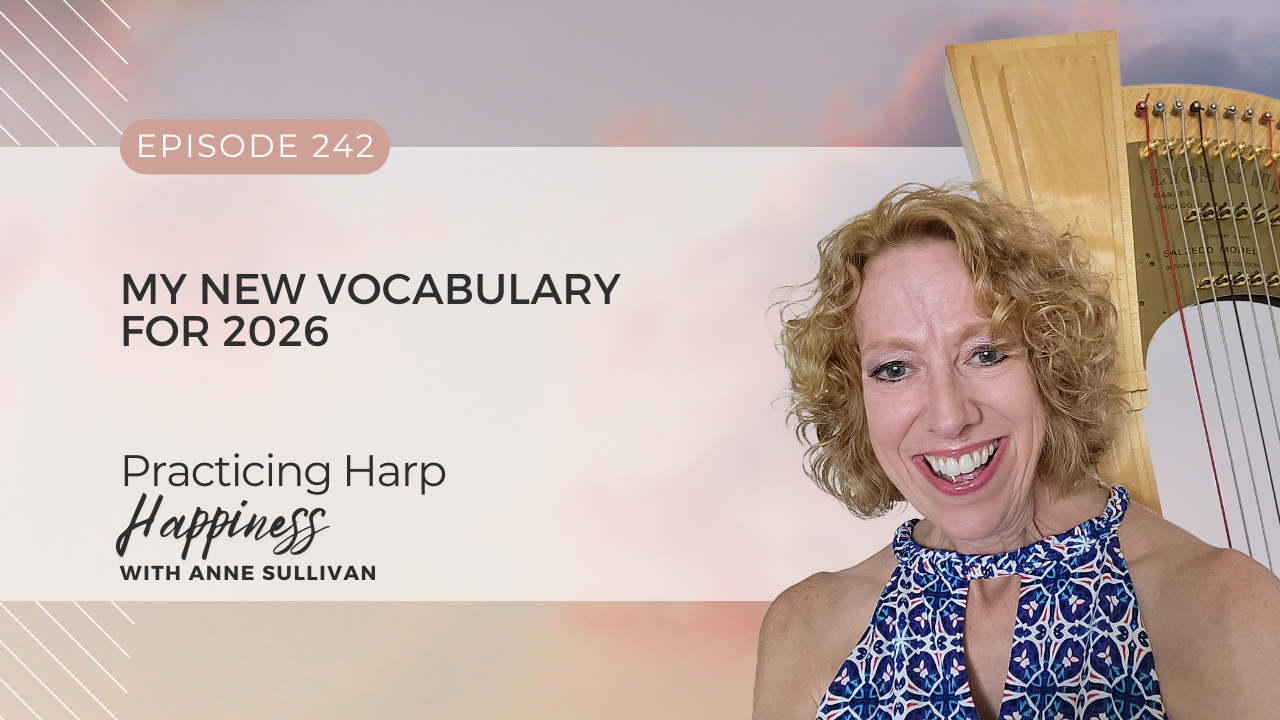
For me, and I think for many people, this last week of the year is a supremely hopeful one. The rush to get ready for Christmas is behind us and the promise of a new year is finally in focus. We’re faced with possibilities for a change, instead of pressure.
I realize, of course, that for many of us those possibilities for the new year include uncertainty, worry and fear which are beyond any assistance I could give on this podcast. I can merely offer prayers that the universe grants us all the courage and resources we need to face the circumstances before us. And I will stick to what I know best, how to help you find more meaning, joy and fulfillment in your harp playing,
It has become a fairly wide-spread practice at the beginning of the year to choose a word or a phrase to be your touchpoint throughout the year, to inspire you, motivate you and keep you focused. As I was thinking through my word for 2026, I realized that many of the words I have been using frequently in my teachi...
#240: Classics for a Relaxing Holiday
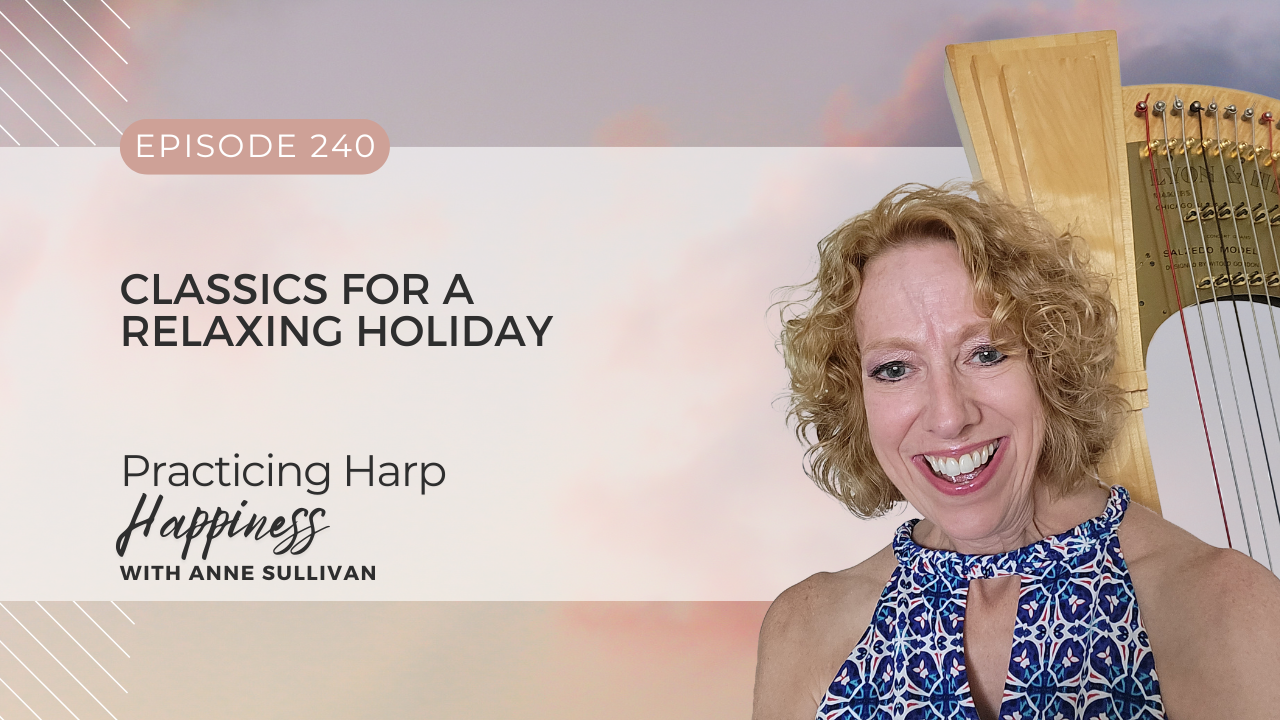
It’s Christmas week, and for me, this is a week to finally settle into the holiday mood. This is the time we decorate our tree, get in touch with friends and family, and start reveling in the spirit of joy and peace that feels so elusive other times of the year.
So this is not the week I want to dive into a heavy teaching topic here on the podcast. What I want to do today is spread a little holiday harp happiness with a short musical program for you to enjoy.
The theme of the program is “Classics for a Relaxing Holiday,” classical music that is appropriate for the holidays, but isn’t specific to this time of year. In other words, no jingling bells or Santa Claus songs - just calm, perhaps even meditative harp music, assembled from my various recordings and videos.
I’ve listed the program in the show notes, and for some of the pieces, you’ll also find links to sheet music arrangements in our Harp Mastery® shop. I’ve also included spoken introductions to each piece to give you a ...
#239: The Stories Behind the Songs: Three Carols Revisited
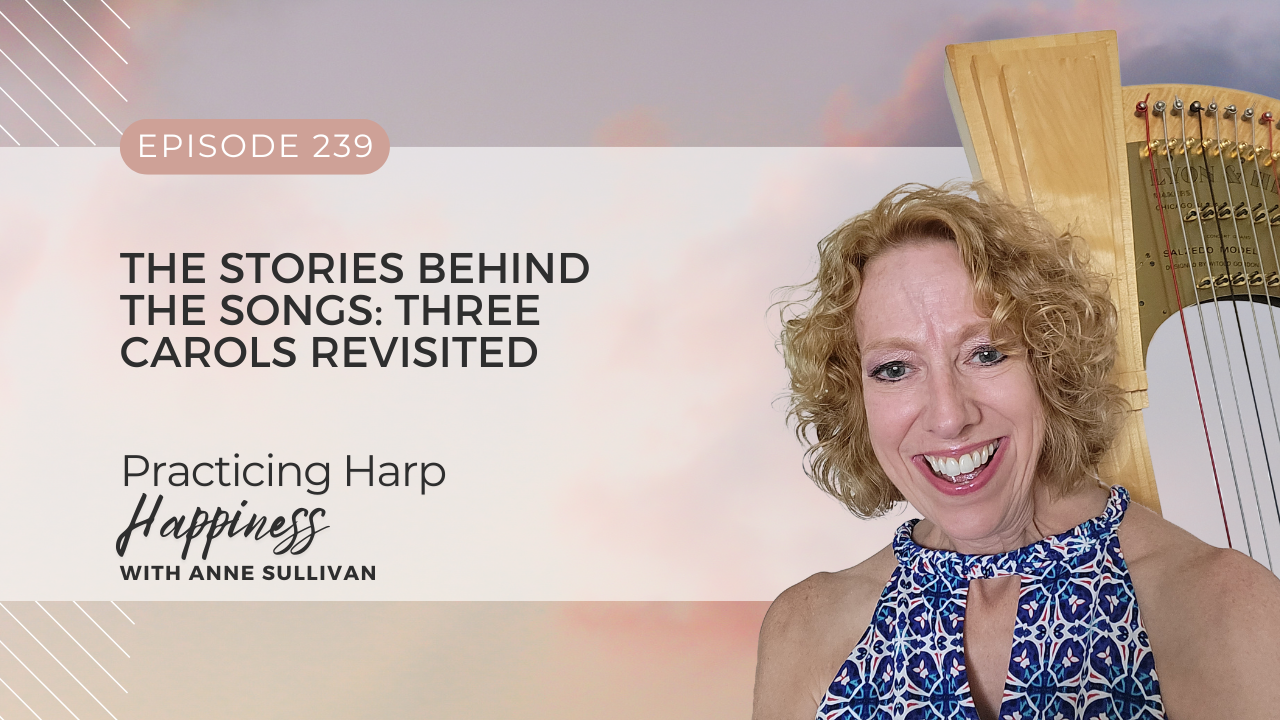
I’m kind of a Christmas carol geek, if there is such a thing. I’ve always enjoyed playing them and even as a young person, I was fascinated by where they came from: their origins, translations, composers, text sources, etc. For me, the stories behind the carols were a kind of history and geography lesson rolled up into the magic and meaning of Christmas.
I think the origin stories are what really held my interest. The writing of “Silent Night” because a church organ in Austria was damaged, or the composition of “O Holy Night” as a dedication piece to a renovated organ in France are stories that aren’t just interesting, though. They shape how I think about those songs and how I play them, certainly how I arrange them as well.
Today, I want to share the back stories to three carols. I know you’re familiar with these carols, but you may not be familiar with their origin stories. If you’re like me, you love hearing insider scoops and these are back stories you probably won’t hear anyw...
#238: How Purpose Fuels Progress: The Map You’ve Been Missing
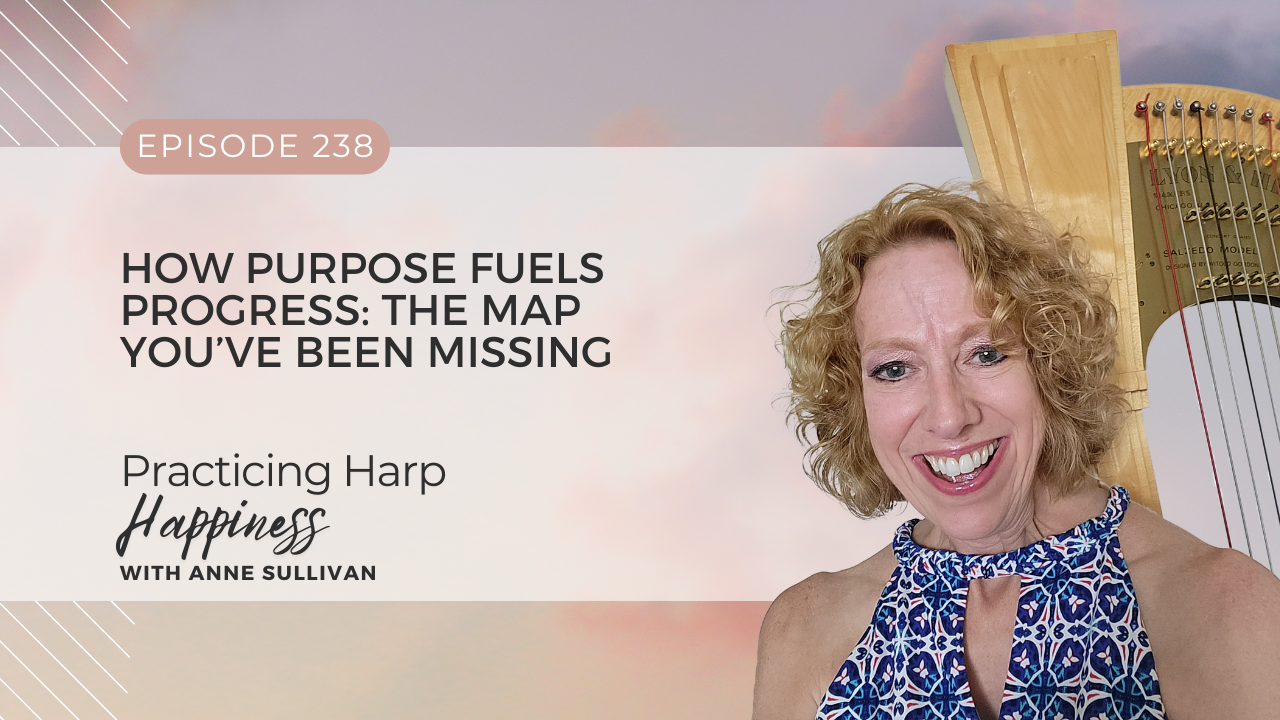
My first ocean cruise was a cruise from New York City to Bermuda. I’d never been on a big ocean liner before. Although I’ve done a couple other ocean cruises since then, I’m not really a fan. I love exploring, and there is only so much exploring you can do on a ship in the middle of the ocean.
But on this first cruise, I did love the feeling of being in the middle of the vastness of the ocean with nothing but water all around. The feeling of not having any landmarks - literally - was a little exhilarating and more than a little awe-inspiring. Naturally, I wasn’t really frightened; I assumed, logically and correctly, that the captain and crew knew where we were heading and how to get there. I myself wouldn’t have had a clue, but I never doubted that I could rely on them to get me safely to Bermuda and back.
Nautical navigation is a mystery to me, and I was impressed by the notion that all the power and energy of the ship would have been useless if the captain hadn’t set a direction...
#237: Music Angels: Leah Kim and the Transformative Power of Music
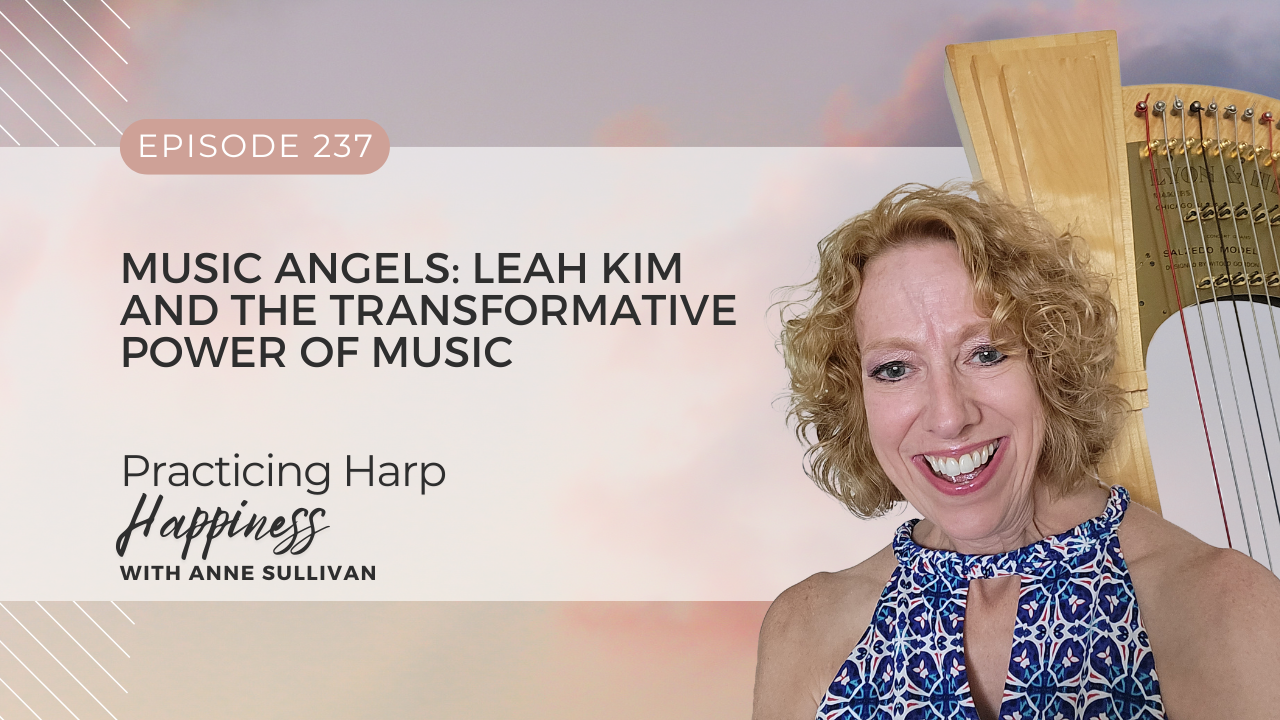
I don’t do very many interviews on this podcast. I started the show as a way to help harpists with their learning and I wanted, and still want, to be able to use this podcast to teach, to encourage and to inspire harpists all over the world.
But over the last year, I have realized that there are other voices I want to be sure that you hear. After all, learning comes in many forms and hearing a variety of voices and viewpoints enriches us and our harp playing in so many ways. So during 2026, one of my objectives is to bring you into conversations with harpists, musicians and others who inspire me. These are people I want you to meet, even if it’s only in this podcast format, because I want to share the inspiration that they have brought me with you.
So today, I want to introduce you to a new friend of mine, Leah Kim. Leah is a violinist and her story starts in South Korea. Her story is truly an awe-inspiring one, and as you will hear, she shared a lot of it in our conversation. Si...
#236: 7 Quick Fixes so You Can Play Your Stress-Free Best
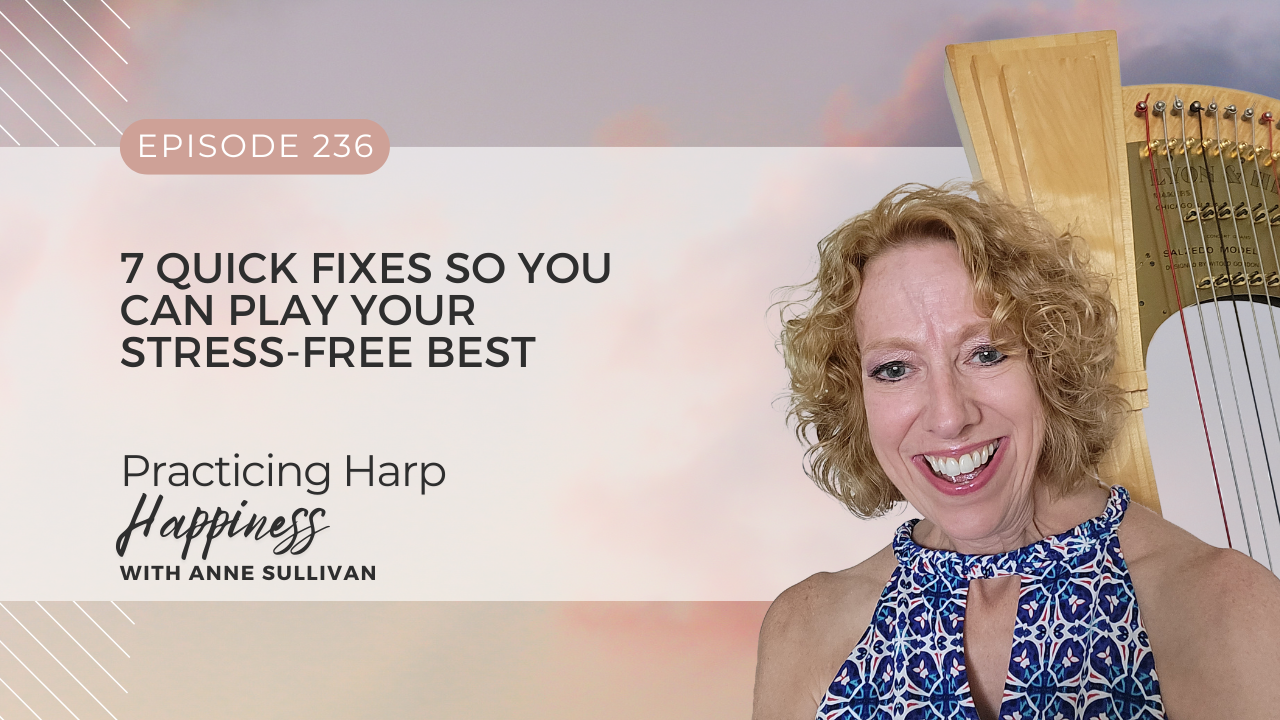
It’s time for a confidence boost.
You’ve been practicing your holiday music and feeling like you’re making good progress, but it’s not quite there and the performance date is coming up soon.
Your music is mostly fine. It has up days when everything goes perfectly and down days when it feels like you’ve never played the piece before. Maybe it’s not quite up to tempo. Or maybe there are just a few measures - or maybe more than a few - that are resisting all your attempts to learn them and play them smoothly. Whatever the issue is, it’s starting to be a little concerning because time is getting short.
We never want to feel unprepared or less ready than we would like for a performance, but sometimes it happens, despite all our planning and preparation. Believe me, I am the last person who would try to tell you that you should have started learning the piece sooner, or practiced more. I know all too well from my own experience that sometimes music just takes longer to come together t...
#235: Where Harp Beginners Go Wrong - and Maybe You Do Too
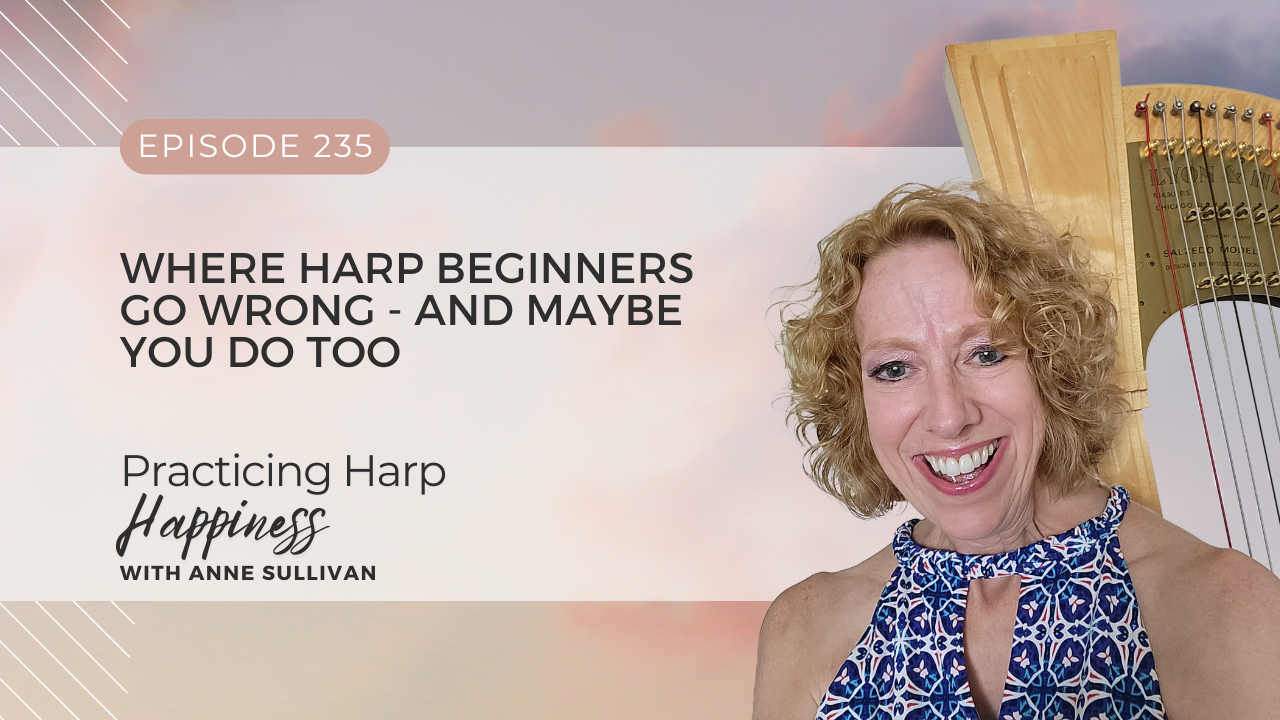
I know what I’m going to talk about with you today could be controversial. It could sound totally off target to you. Nevertheless, I hope you will hear me out.
I want to share with you why and how I think most harp beginners start wrong, even if they are working with a teacher. It isn’t exactly that we teachers aren’t teaching the right things or that we aren’t dedicated to the success of the students who are trusting us. It’s that the path we walk with them feels so slow.
Every individual comes to the harp with a unique skill set and level of musical experience, with their own learning style and level of commitment. But each student comes to the harp with the same objective: to play music on the harp. That’s why I started the harp, and it’s almost certainly why you did too.
So today I want to talk about the things that hold beginners back, that keep them from making the progress they want, from playing the music they want, in a timeframe that feels right to them. Most of these...
#234: Three Keys to Relieving Stress
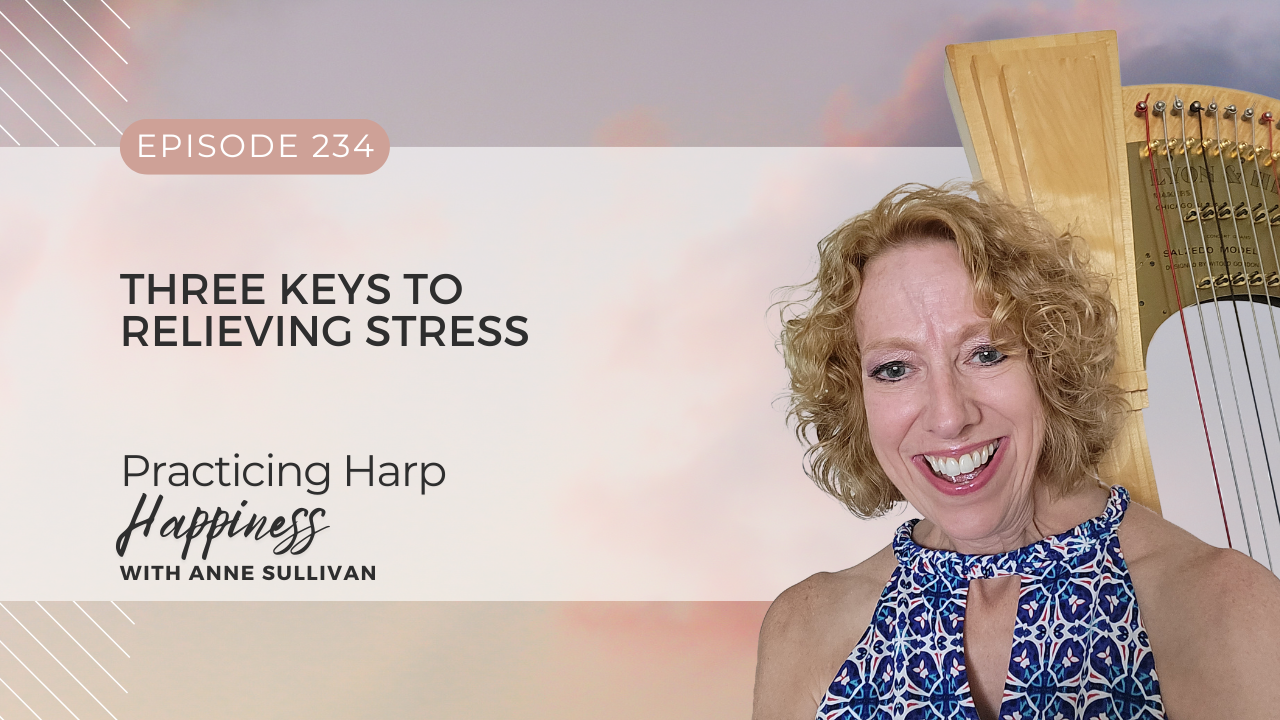
I was moving the harp the other day and once again, it occurred to me just how much stuff we have to carry around with us. Granted, I move my harp all the time for rehearsals and concerts - it’s a big Lyon Healy Salzedo model harp - so you would think I’d be used to it by now. I guess I am, mostly; I don’t have to think about what goes in the car, and my harp bag is always ready to go. But when I start counting the number of trips I have to make between my car and the concert hall in the pouring rain, I start wishing for a Star Trek transporter.
But recently, while I was moving the harp, my bench, my stand, and my bag, I had a flash of insight; we harpists carry a lot of baggage with us. Not a revelation, I know, but it led my mind to consider the other kind of baggage we harpists carry, the stress that accumulates in our practice and performance. That’s a kind of baggage that piles up in a sneaky way until one day, we find it has overwhelmed us. The physical stress that is part ...

